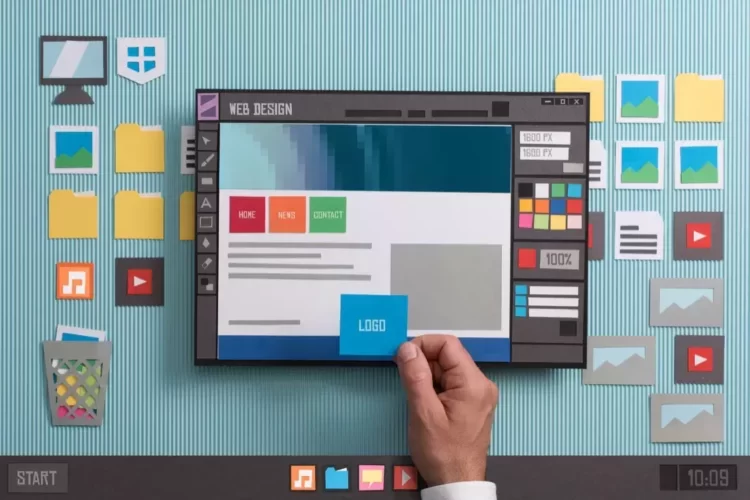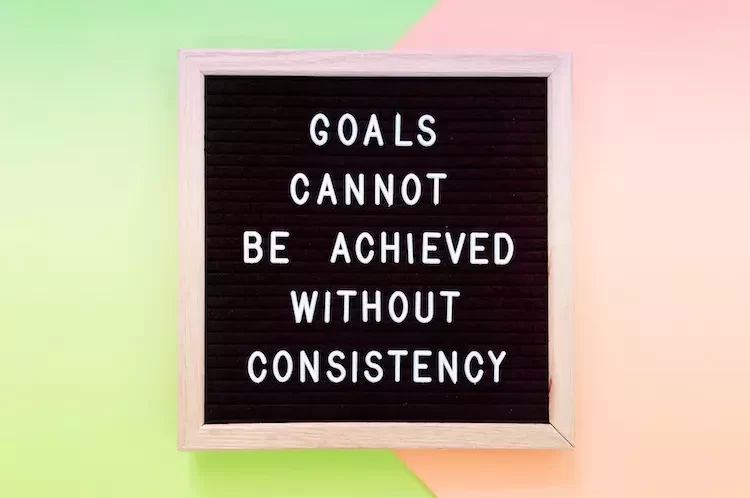Unravel the secrets of creating an accessible website and dive deep into the world of web accessibility in web design. Why should you stick around? This guide doesn’t just skim the surface; it gives you the tools, techniques, and best practices to make your website a haven for everyone, regardless of their abilities. It’s not just about compliance; it’s about creating meaningful and inclusive online experiences.
Key Takeaways: A Guide to Web Accessibility in Web Design
- Definition of Web Accessibility: It’s the practice of ensuring that websites are usable by as many people as possible, especially those with disabilities.
- Importance of Web Accessibility:
- Ensures inclusivity and broader audience reach.
- Offers better SEO benefits.
- Reduces legal risks.
- Enhances brand image and user experience.
- Role of Alt Text in Web Design: Alt text provides a textual description for images and visual elements, making them accessible for screen reader users.
- Inclusive Navigation:
- Prioritise keyboard-friendly navigation.
- Ensure a clear and consistent layout.
- Use “skip to content” links and clear headings.
- WCAG Guidelines: The Web Content Accessibility Guidelines offer a framework for making web content accessible. The four foundational principles are:
- Perceivable
- Operable
- Understandable
- Robust
- Colour Contrast in Design: Ensure text has a clear contrast against its background to aid readability.
- UX and Accessibility: Prioritise simplicity, provide clear feedback, maintain consistency, and ensure the content is easy to understand.
- Tips for Enhanced Accessibility:
- Ensure multimedia is inclusive with captions and audio descriptions.
- Make sure all website functionalities are accessible via keyboard.
- Regularly test your website for accessibility issues.
- Stay updated on the latest in web accessibility and foster a culture of inclusivity.
- The Big Picture: Web accessibility is not just a technical requirement but a commitment to creating a more inclusive digital landscape for everyone.
What is Web Accessibility in Web Design?
Web accessibility is the art and science of making web pages accessible to everyone, including people with disabilities. It’s ensuring that regardless of disability, impairment, or any other limitation, everyone has equal access to information and functionality on the web. It’s not just about ticking off a checklist; it’s about inclusivity and a commitment to making the digital world as welcoming as the physical one.
Imagine being a developer and building a beautiful website, only to find out that a significant portion of your audience can’t navigate it. That’s where the importance of web accessibility comes in. The main principles of creating an accessible website revolve around ensuring everyone can perceive, understand, and interact with web content, regardless of their abilities.
Table 1: Key Web Accessibility Terms
| Term | Description |
|---|---|
| Web Content Accessibility Guidelines (WCAG) | A set of guidelines that lay out how to make web content more accessible to people with disabilities. |
| Alt Text | A short description of images used to help screen reader users. |
| Colour Contrast | The difference in colour that makes text readable against a background. |
| Navigation | The way users move around a website and access its content. |
Why is Website Accessibility in Web Design Important?
Website accessibility isn’t just a good-to-have; it’s a must-have. But why? For starters, an inclusive website is a testament to your commitment to inclusivity. Not only does it cater to a wider audience, but it also ensures that your content reaches everyone, including those with disabilities.
Did you know? One in five people in the UK has some form of disability. This statistic alone should highlight the magnitude of the issue. Imagine excluding 20% of your potential audience simply because your website wasn’t designed with inclusivity in mind.
Moreover, web accessibility isn’t just about catering to people with disabilities. It’s about designing for everyone. Think about it. Haven’t we all benefited from captions while watching a video in a noisy environment? Or used voice commands when our hands were full? That’s the beauty of an accessible website design—it’s universal.
List of Benefits of an Accessible Website:
- Wider Audience Reach: Cater to everyone, including people with disabilities.
- Better SEO: Search engines love accessible websites.
- Reduced Legal Risks: Stay compliant and avoid potential lawsuits.
- Enhanced Brand Image: Show your commitment to inclusivity.
- Improved Usability: An accessible website is often more user-friendly for everyone.
The Four Pillars of Accessibility in Web Design
Web Content Accessibility Guidelines (WCAG) is the gold standard when it comes to web accessibility standards. Developed by the World Wide Web Consortium (W3C), it lays out the main principles of creating an accessible website. These principles are often termed as the four pillars of web accessibility.
- Perceivable: Users must be able to perceive the information being presented. This means that the content should be available to at least one of their senses. For instance, visual content should have text alternatives for those who rely on screen readers.
- Operable: Users should be able to interact with all controls and navigation of the website. For instance, all functionalities available through a mouse should also be accessible via a keyboard.
- Understandable: The information and operation of the user interface must be clear. This means that content should be readable, and navigation should be predictable.
- Robust: Content should be robust enough to be reliably interpreted by a wide range of user agents, including assistive technologies.
Every web developer and designer should familiarise themselves with these principles. They serve as the foundation for creating websites that are truly accessible for everyone.
Stay tuned for the next section where we’ll delve deep into the role of alt text in web design and how it plays a pivotal role in enhancing the user experience.
Remember, an accessible website is not just about compliance; it’s about opening up the digital world to everyone. Every step you take towards creating an inclusive website brings us one step closer to a world where the internet is truly for everyone. So, roll up your sleeves and let’s make the web a better place, one website at a time!
The Role of Alt Text in Web Design
Alt text, short for “alternative text”, is a crucial component in the realm of web accessibility. But what is it? At its core, alt text provides a textual description for images, graphics, and other visual elements on a website. This ensures that individuals who rely on screen readers — particularly those with visual impairments — can understand the content and context of the image.
Imagine a vivid, captivating image on a website. For those with visual impairments, this image becomes a blank space without alt text. By including a concise description, you bridge that gap, ensuring that the image’s message isn’t lost.
Alt Text Best Practices
| Best Practice | Description |
|---|---|
| Be Descriptive | Describe the image’s content and function. If it’s a call-to-action button, explain its purpose. |
| Keep It Succinct | Aim for brevity while being informative. Typically, 125 characters or less is ideal. |
| Avoid Redundancy | Don’t start with “image of” or “picture of.” Screen readers already announce the content type. |
| Use Keywords Sparingly | While alt text can aid in SEO, avoid keyword stuffing. Be organic and natural in your descriptions. |
Navigating Your Way to an Inclusive Design
How do users navigate your website? Whether it’s through a mouse, keyboard, or voice commands, seamless navigation is the backbone of an accessible website. But let’s dive deeper.
For many, especially those with disabilities, navigation is more than just clicking links. It’s about being able to traverse a website without barriers. It includes:
- Keyboard Navigation: Users should be able to navigate your site using just a keyboard. The ‘Tab’ key should let users move from one interactive element to the next, while other keys like ‘Enter’ or ‘Space’ activate those elements.
- Consistent Layout: Keeping a consistent layout across web pages aids in predictability. This means having menus, links, and buttons in the same locations.
- Skip to Content Links: These are links that allow users to skip navigation menus and jump directly to the main content. A boon for keyboard and screen reader users!
- Clear Headings: Properly labelled headings make content skimmable and allow screen reader users to understand page structure.
Remember, the goal is to create a website where users can easily find what they’re looking for without feeling lost.
Making Your Website Accessible: A Handy Checklist
Creating an accessible website might seem daunting. But with the right tools and knowledge, it’s achievable. Here’s a handy checklist to guide you:
- Alt Text for All Images: Ensure every image, graphic, and visual element has descriptive alt text.
- Keyboard-Friendly Navigation: Ensure users can navigate the entire site using just the keyboard.
- Clear and Consistent Layout: Familiarity is key. Keep layouts predictable.
- Readable Text: Use high contrast colours for text and background. Also, ensure font sizes are adjustable.
- Accessible Forms: Label all form fields, and provide error messages to guide users.
- Avoid Automatic Media: Avoid media that plays automatically, especially if it contains audio.
- Test with Screen Readers: Regularly test your website with popular screen readers to ensure compatibility.
In our next segment, we’ll delve into the world of WCAG and uncover its best practices. Together, we’ll explore the myriad ways to elevate the accessibility of your website, ensuring every visitor feels welcomed and valued. The digital world is vast and diverse; let’s ensure it’s inclusive too.
Decoding WCAG: A Peek into Best Practices
The Web Content Accessibility Guidelines (WCAG) are the beacon guiding us towards creating a more inclusive digital landscape. Developed by experts from around the globe, these guidelines offer a comprehensive framework for making web content accessible to a broader audience, including those with disabilities.
WCAG operates on four foundational principles, ensuring that content is perceivable, operable, understandable, and robust. But beyond these principles, WCAG offers a wealth of best practices to adhere to.
Key WCAG Best Practices
| Best Practice | Description |
|---|---|
| Text Alternatives | Provide text alternatives for non-text content, making it accessible for screen reader users. |
| Time-based Media | Offer alternatives for time-based media, like captions for videos or audio descriptions. |
| Adaptable Content | Ensure content can be presented in different ways without losing meaning or structure. |
| Distinguishable Elements | Make it easier for users to see and hear content, avoiding blurring between foreground and background. |
The Interplay of Colour Contrast and Design
Colour isn’t just an aesthetic choice; it plays a pivotal role in web accessibility. A well-chosen colour palette can greatly enhance readability and user experience. But what happens when there isn’t enough contrast between the text and its background?
Low colour contrast can make text hard to read, especially for those with visual impairments like colour blindness or low vision. Ensuring sufficient colour contrast is not just good for accessibility; it’s a fundamental design principle.
Some handy tools, like the WebAIM Colour Contrast Checker, can evaluate the contrast of your chosen colours and ensure they meet the recommended WCAG standards.
Remember:
- Large Text: Should have a contrast ratio of at least 3:1 against its background.
- Regular Text: Should have a contrast ratio of at least 4.5:1 against its background.
UX Principles for an Accessible Web Experience
User Experience (UX) and web accessibility go hand in hand. An accessible website inherently provides a better user experience as it caters to a broader range of users. Here are some UX principles to ensure an inclusive web experience:
- Focus on Simplicity: A cluttered site can be overwhelming. Keep design and navigation straightforward.
- Feedback is Vital: Whenever a user takes an action, provide feedback. Whether they’re submitting a form or clicking a button, they should know the outcome.
- Consistency is Key: Whether it’s the placement of your menu or the design of your buttons, ensure consistency across pages.
- Prioritise Content: Content is king. Ensure it’s easy to read, and avoid jargon. Make your website’s purpose clear from the get-go.
Improving Accessibility: Tips and Tricks
Having delved into the foundations of web accessibility, it’s time to explore actionable steps that can elevate your website’s inclusivity. Remember, the goal is not merely to tick off boxes on a checklist but to genuinely make the web a welcoming space for everyone.
Embrace Inclusive Multimedia
While images and videos can enhance a website’s appeal, they can also pose barriers. Here’s how to ensure your multimedia is inclusive:
- Captions for Videos: Ensure all audio content in videos has accompanying captions. This aids individuals who are deaf or hard of hearing.
- Audio Descriptions: For those with visual impairments, audio descriptions can narrate the visual elements of videos.
- Avoid Auto-Playing Content: Videos or audio that play automatically can be disorienting. Always give users the choice to play multimedia.
Prioritise Keyboard Accessibility
Keyboard navigation is paramount for many users, especially those who cannot use a mouse. Ensure all website functionality is accessible through keyboard inputs.
- Visible Focus Indicators: As users tab through elements, a clear visual indicator should highlight their current focus.
- Logical Tab Order: Navigation should be logical and intuitive. Typically, this means moving from left to right, top to bottom.
Regularly Test Your Website
Don’t rest on your laurels. Regularly test your website’s accessibility to catch and rectify issues.
- Use Automated Testing Tools: Tools like WebAIM’s WAVE or AccessScan can scan your website for accessibility issues.
- Engage Real Users: Automated tests can’t catch everything. Engage users with disabilities to gather feedback on your website’s accessibility.
Foster a Culture of Inclusivity
Web accessibility isn’t just the responsibility of developers or designers. It’s a collective effort.
- Educate Your Team: Organise workshops or training sessions on web accessibility.
- Stay Updated: Web accessibility is a dynamic field. Regularly update your knowledge by following organisations like WebAIM, W3C, or WCAG.
Final Thoughts
Web accessibility isn’t just a technical requirement; it’s a moral obligation. In our digital age, websites are gateways to information, services, and opportunities. Ensuring everyone, regardless of ability, has equal access is a testament to a more inclusive and empathetic society.
Your commitment to web accessibility can make a world of difference. Whether it’s a visually impaired student accessing educational material, a deaf individual watching videos with captions, or an elderly person navigating your website effortlessly, the impact is profound.
Every step, no matter how small, towards a more accessible website is a step towards a more inclusive world. So, embrace these guidelines, champion inclusivity, and be the change you wish to see in the digital realm. After all, the web is for everyone. Let’s keep it that way!
Other articles you might enjoy…




